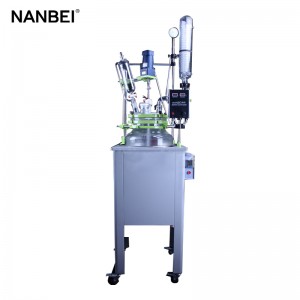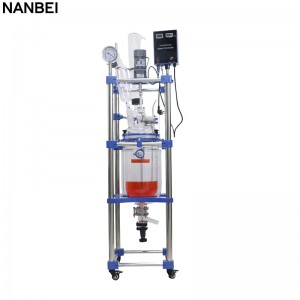Glass Reactor
-

100L double layer jacketed glass reactor
Brand:NANBEI
Model:NB-100L
The kettle body is designed by 50L double layer jacketed glass reactor,the inner layer into the reaction solution to do the reaction was stirred interlayer can pass into the type of the cold heat source circulating heating or cooling the reaction can also be used in high temperature, low temperature, or vacuum experiment reflux and distillation of the reaction solution. It is the ideal equipment for primary and secondary schools of modern chemistry experiments, biopharmaceutical and synthesis of new materials.
-

100L single layer glass reactor
Brand:NANBEI
Model:NBF-100L
Single glass reactor inner placed reaction solvent which can be stirred, interlayer can be filled with cold or hot liquid(frozen liquid, water, gas or hot oil) to do the thermostatic heating/cooling reaction, single layer glass reaction kettle is heated by computer control oil bath or electric heating. At the same time, it can be worked at atmospheric pressure or vacuum state, to control the reaction solution reflux and distillation, it is the ideal equipment for modern synthesis chemical, biological pharmaceuticals and making new materials, used for preparation experiment and production equipment.
-

10L double layer jacketed glass reactor
Brand:NANBEI
Model:NB-10L
The 10L double layer jacketed glass reactor is characterized by variable frequency speed regulation, AC induction motor, constant speed, no brushes, no sparks, safety and stability, and continuous operation. The whole set of glass equipment is made of GG17 high borosilicate glass. It has good chemical and physical properties. The glass interlayer interface is circulated with hot oil, which can be used for heating reaction, and cold liquid can be used for low-temperature reaction. It can be reacted at room temperature, and the reaction heat can be quickly taken away by running tap water. The lower discharge port has a flange port and a polytetrafluoroethylene valve. There is no dead angle in the container, and it can be disassembled to facilitate the discharge of solid materials.





